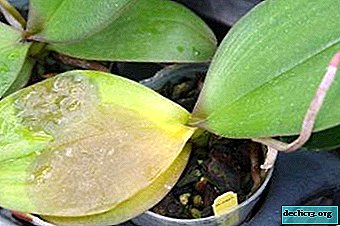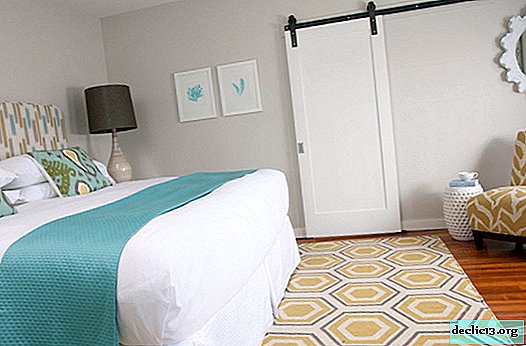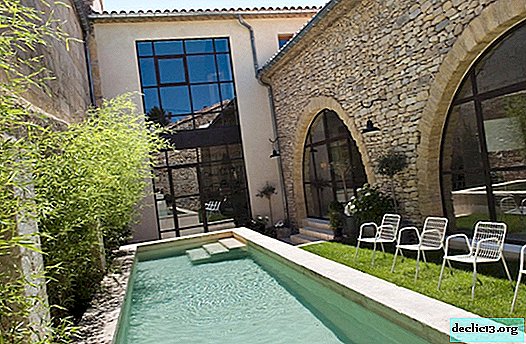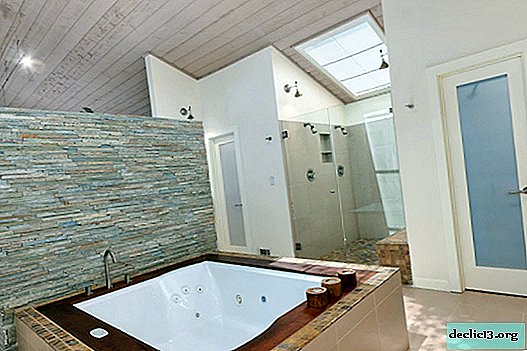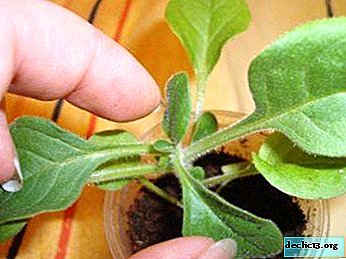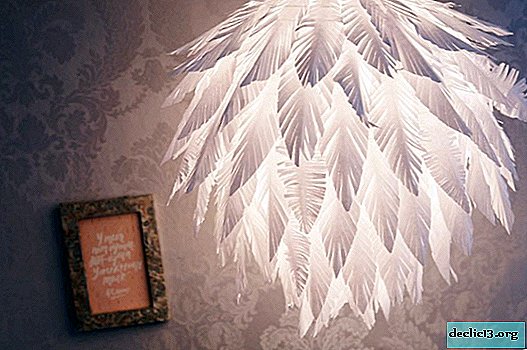The oldest of the plants is the Baikal skullcap. Description, photos and rules for growing shrubs
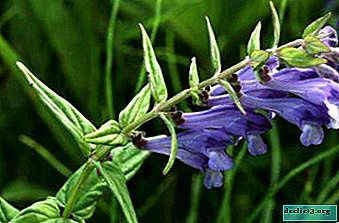
Scutellaria baicalensis is considered one of the universal plant components of traditional Chinese medicine, widely popular in Western European medicine, where it is one of the most effective adaptogens of natural origin. Medicines based on Scutellaria baicalensis have a calming effect on the nervous system, have a vasodilating effect with an increased tone of blood vessels.
Baikal Scutellaria or scutellaria is a relic plant that grew even under dinosaurs. Under natural conditions, it grows near Lake Baikal, the Amur and Primorsky Territories, China, Mongolia, North Korea and Scandinavia. Since ancient times, the Baikal skullcap has been used as a medicinal plant. Herbalists heal with its help more than forty diseases.
The appearance of the plant
Baikal Scutellaria (Scutellaria Baicalensis) - a perennial stunted shrub. It has branched, erect, tetrahedral stems that can stiffen at the basal zone.It grows to 50 cm in length. Scutellaria blooms with bell-shaped flowers collected in inflorescences in the form of an ear. The diameter of the flowers reaches 2.5 - 3 cm, the color is blue, blue, raspberry, burgundy or purple. The corolla of flowers has the shape of a helmet, which gave the name to the plant.
After flowering, oval fruits appear on the plant, which open and scatter seeds.
Photo
Below are photos of this shrub.





Growing and planting
Shlemnik belongs to the genus of flowering ornamental plants. Some landscape designers use it in the form of small monoclops. In most cases, grown from seeds. By dividing the bush, the culture multiplies worse, and takes root poorly.
Soil preparation
The ideal soil for the Baikal Scutellaria is light, neutral, moisture- and breathable earth. To do this, ensure drainage and timely loosening.Compost is introduced into the soil from autumn mixed with ash. If the soil is acidic, add dolomite flour to neutralize. When planting seeds, close superphosphate granules into the ground. This will ensure the germination of shoots. Carefully cultivate the soil from weeds, they can damage the root system of the plant.
Types of cultivation
From seed
Growing from seeds is the easiest method.. If the soil is prepared correctly, then the seeds will give excellent friendly seedlings.
Buy seeds only in specialized stores. Pay attention to the packaging - it should be intact, without tears and signs of dampness.
Scutellaria seeds must be stratified before planting. It can be done in two ways:
 For two months, place the bag of seeds in the refrigerator. With this method, the seeds are planted in well-prepared soil in the spring, when the danger of night frosts passes.
For two months, place the bag of seeds in the refrigerator. With this method, the seeds are planted in well-prepared soil in the spring, when the danger of night frosts passes.- Sow in the fall immediately into the soil. Thus, the plant will undergo a natural stratification during the winter, and in the spring will give amicable shoots.
Scutellaria planting technology in spring:
- Sowing is carried out in late April or early May, depending on the climatic conditions of the region.
- Carefully level the soil, remove weeds, ripe leaves and branches.
- Scutellaria seeds are shallow, so the depth of seeding should not be more than 0.7 cm. Simultaneously with the seeds, introduce several granules of superphosphate into the soil so that the sprouts sprout together.
- Shoots appear after about 2 weeks. They need frequent loosening to ensure oxygen flow in the topsoil.
- Do not allow the formation of crust on the soil after watering the sprouts.
- If you get thick shoots, the plant can be transplanted, but no later than three true leaves are formed. To do this, carefully take the plant along with a lump of earth and transplant it to a new place. Be sure to pour Kornevin solution. If the moment is missed, it does not make sense to transplant the skullcap, as it will not take root due to the structure of its root. Just thin out the flowerbed.
Scutellaria blooms in the second year. Landing technology in autumn is not fundamentally different. If you chose this method, just sow the seeds on the prepared soil before the first snow and in spring you will see friendly shoots.
Dividing the bush
The vegetative division of Scutellaria is more complicated than by seeds. This is due to the fact that its root has a rod shape and is easily damaged. Such reproduction makes sense only when it is necessary to preserve the maternal characteristics of the plant - color, flower size and so on.
The bush should be more than ten years old, but even in this case without jewelry accuracy it is better not to undertake such reproduction.Scutellaria reproduction technology:
- Very carefully dig out the bush, carefully clean the root from the ground.
- With a sharp knife, divide the rhizome so that each piece has a renewal kidney.
- Sprinkle with finely chopped coal the wound surface of the root.
- In a pit prepared for planting, add 10-15 g of nitroammophoski or urea with phosphorus-potassium fertilizer.
- Plant the plant up with a renewal bud.
Due to its unusual appearance, as well as its unpretentiousness in the care and frost resistance, the plant is widely used in landscape design. It is used in mono-flowerbeds; it is decorated with borders, rockeries, rock gardens. But not only in landscape design can you use a plant. We talked about what type of scutellaria - scarlet, alpine or another - as a houseplant, in this article.
Care
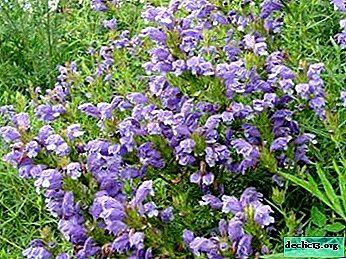 Lighting. Baikal Scutellaria is an unpretentious plant. He feels especially well in sunny areas, but without direct sunlight, which can burn the delicate flowers of the plant. In shady places, the culture feels quite comfortable, but the lack of sun leads to the fact that the flowers are smaller.
Lighting. Baikal Scutellaria is an unpretentious plant. He feels especially well in sunny areas, but without direct sunlight, which can burn the delicate flowers of the plant. In shady places, the culture feels quite comfortable, but the lack of sun leads to the fact that the flowers are smaller.- Watering. Shlemnik is a drought tolerant plant. Watering the skullcap is recommended only during periods of drought. Under normal weather conditions, the long root of the plant is capable of extracting moisture for itself.
- Temperature. The Baikal skullcap is not demanding on temperature conditions. He is equally well taking root both in the southern and northern latitudes of our country.
- Priming. The Baikal skullcap does not like heavy chernozems. Feels best on light, neutral, well-drained soils. In the first year, when the root system has not yet gained strength, it is necessary to periodically loosen the ground and be sure to remove weeds.
- Top dressing. For active growth and beautiful flowering, it is necessary to fertilize the soil.
The feeding scheme of the Baikal skullcap:
- The first time fertilizer is applied in the fall, before planting seeds. Mix one bucket of compost (or a half bucket of humus) with two glasses of ash, add to one square of the earth and dig it up.
- The following dressing is carried out during the growing season of the plant, with nitrogen or organic fertilizers.
- During the setting of buds, potash and phosphorus fertilizers are applied to the soil.
- Pruning. In the northern regions, pruning for the winter is not necessary, as it will better tolerate the winter. Dried stems are best trimmed in the spring. In the southern regions, pruning can be done in autumn, leaving “stumps” 5-7 cm high.
Diseases and Pests
The most dangerous disease of this unpretentious plant is rot. It can affect all parts of the skullcap, without the possibility of recovery. To prevent this disease, observe moderate watering and drain the soil before planting.
All kinds of insects, which are dangerous for other crops in your area, do not do much harm to the Baikal skullcap. It should be treated with the same drugs as other plants.
Healing properties
 Shlemnik has always been valued in folk medicine.. In Chinese medicine, it is an important component of many medicinal products. It is widely distributed in Western European medicine, where it is one of the effective adaptogens of natural origin.
Shlemnik has always been valued in folk medicine.. In Chinese medicine, it is an important component of many medicinal products. It is widely distributed in Western European medicine, where it is one of the effective adaptogens of natural origin.
In folk medicine, the root, leaves and flowers of a plant are used. Decoctions, syrups, ointments, tinctures and extracts are prepared from them, all of which are used for treatment:
- hypertension
- arrhythmias;
- with diseases of the digestive and excretory system;
- with a disorder of the nervous system;
- as an antipyretic and hemostatic agent.
You can find out more nuances about the composition, medicinal properties and possible contraindications of Baikal scutellaria from this material.
Baikal Scutellaria is a very beautiful plant with strong medicinal properties. Shlemnik is unpretentious in leaving, looks good on country sites and in gardens. With proper care, he will delight you with his beautiful flowering all summer.

 For two months, place the bag of seeds in the refrigerator. With this method, the seeds are planted in well-prepared soil in the spring, when the danger of night frosts passes.
For two months, place the bag of seeds in the refrigerator. With this method, the seeds are planted in well-prepared soil in the spring, when the danger of night frosts passes. Lighting. Baikal Scutellaria is an unpretentious plant. He feels especially well in sunny areas, but without direct sunlight, which can burn the delicate flowers of the plant. In shady places, the culture feels quite comfortable, but the lack of sun leads to the fact that the flowers are smaller.
Lighting. Baikal Scutellaria is an unpretentious plant. He feels especially well in sunny areas, but without direct sunlight, which can burn the delicate flowers of the plant. In shady places, the culture feels quite comfortable, but the lack of sun leads to the fact that the flowers are smaller.
